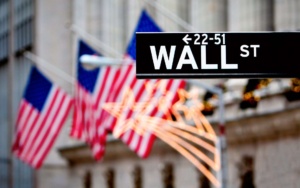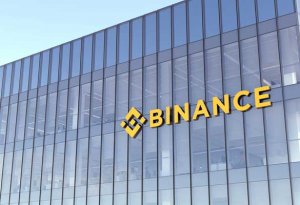This day in history: July 15, 2011: End of the road for foreign FX brokers in the US
We take a look back at “This day in history” within the world of FX taking a journey through annuls of time to look at the various groundbreaking developments that continue to take place in our fascinating industry.

The two major events which expedited the implementation of a comprehensive reform which extended across the entire financial markets infrastructure in the United States in the form of the Dodd-Frank Wall Street Reform Act which was sworn in by President Obama in 2010 are now a distant memory.
In the immediate aftermath of the global financial crisis, the need for full reassessment of how all financial markets activity is carried out in the United States was assessed, with the Dodd-Frank Wall Street Reform Act being a full set of new rulings that ranged from how banks can trade on their own accounts (proprietary trading) to how trading infrastructure must be built, including the need for trade depositories, swap execution facilities, and in the case of institutional trading, trades became subject to execution via a central counterparty.
The implementation of these new and revolutionary procedures was a long, drawn-out affair, however there were two events in 2011 that caused the US government to attempt to speed up their implementation, one being the demise of MF Global in 2011, in which the company’s stock price declined two-thirds in the final week of October 2011 and its credit rating was reduced making its debt high-yield debt following huge quarterly losses.
On October 31, 2011, trading was halted on shares of MF Global prior to the market opening, and soon thereafter MF Global announced that it had declared Chapter 11 bankruptcy. Shortly afterwards, federal regulators began an investigation into hundreds of millions of dollars in missing customer funds.
Mr. Corzine resigned as CEO on November 4, 2011, after having retained the services of defense attorney Andrew J. Levander. It was reported that Corzine declined a severance package worth $12.1 million. MF Global’s collapse was one of the ten biggest bankruptcies in U.S. history.
Corzine was subpoenaed to appear before a House committee on December 8, 2011, to answer questions regarding 1.2 billion dollars of missing money from MF Global client accounts.
He testified before the committee, “I simply do not know where the money is, or why the accounts have not been reconciled to date”, and that given the number of money transfers in the final days of trading at MF Global, he didn’t know specifics of the movement of the funds. He also denied authorizing any misuse of customer funds.”
The other example was Peregrine Financial Group Inc., commonly known as PFGBest, which was an Iowa-based financial firm that operated for over 20 years. It was shut down in July 2012 after it was put under investigation for a $200 million shortfall in customer funds.
Peregrine’s chief executive, Russell R. Wasendorf Sr., was arrested and charged with making false statements to the Commodity Futures Trading Commission (CFTC).
The firm filed for bankruptcy on July 10, while listing more than $500 million in assets and over $100 million in liabilities.
These two high profile disasters led to the government, in conjunction with the CFTC, a regulator which, unlike any other regulatory authority worldwide, has government officials representing the Democrat or Republican party as Commissioners, to move very quickly to stop two practices, the first being any access by electronic trading firms to customer funds by ensuring that they segregate them from operating capital and maintain a $20 million net capital adequacy requirement just for regulatory purposes (not operating capital), and the other being to ban all activity by US companies outside the US and prevent any non-US client from trading with US brokerages.
A mass exodus from the US by firms that either could not, or did not want to comply with these stringent and expensive rules.
Those domestic firms that remained became subject to very sophisticated daily reporting obligations to the CFTC and National Futures Association (NFA) and within the space of one year, the 44 companies that had operated in the US offering FX trading to retail customers, dwindled to just 9.
Today, FXCM, GAIN Capital, Interactive Brokers, OANDA Corporation and the FX division of retail equities firm E*TRADE nestle as the only dominant retail FX companies among over 60 institutional, proprietary trading and global banking entities in the US market.
On this day 5 years ago, this had reached brokerages as far afield as Switzerland, as Dukascopy closed the positions of all of its traders in the United States on July 15, 2011.
At the time, the company stated “Pursuant to changes in US Forex regulation, US residents who are not eligible contract participants will be invited to transfer their accounts to one of our US partners which will provide Dukascopy Bank’s trading technology and data feed to US clients.”
The company asked customers in the US to note that all positions opened with Dukascopy Bank by non-eligible contract participants must be closed by July 15, 2011 at 18:00 GMT (July 14 at 18:00 GMT for non-USD accounts).
As an attempt to retain some business in the US without having to register as a Futures Commission Merchant with the CFTC, establish operations in North America and set aside $20 million in regulatory net capital, which would have been a huge undertaking for a small company such as Dukascopy at that time, the firm attempted to salvage some business in the US by stating that it was able to provide its proprietary technology as a white label solution to brokerages in the US without actually offering brokerage facilities, as technology does not require licensing by financial markets regulators if no handling of positions or client onboarding takes place.
At the time, Alain Broyon, then CEO of Dukascopy Bank said “Due to recent changes in US Forex regulation, Dukascopy Bank is looking for new partnerships with US based brokers so as to serve its clients in conformity with US regulation. Our strategy to provide Dukascopy Bank’s technology via White Label Solutions to onshore licensed brokers is showing its success. This is great news for both Dukascopy Bank and its clients residing in the USA. We expect this cooperation to be very fruitful for all concerned parties”.
Mr. Broyon has since moved on, and is now engaged in very interesting projects, including Money-ID, which is a fully automated financial passport which he is developing in conjunction with Swiss private bank Lombard Odier, as well as crowdsourced movie production firm E-MOOVIE which produces The Vape Wave, The Arrow Of Time and Nepal-Beyond the Cloud.
How times change…..









